TABLE OF CONTENTS
The sharpness and long-lasting luster of kitchen knives require careful maintenance. Otherwise, things like dullness, turned back, knife breaks or rust will happen. So how to maintain them correctly? It needs to do the care job according to the different materials and usage of the knife.
Care for Stainless Steel Knives
Stainless steel kitchen knives are made of steel with more than 15% chromium. They are not easy to rust and break, so it is simple to maintain. However, if your stainelss steel knife have rust spots, get the tips on removing rust from stainless steel knife.
Due to the low percentage of carbon inside, they are not so sharp as carbon knives. And the time to hold an edge is short. Therefore, they need to sharpen the knife frequently.
Misunderstanding #1
The stainless steel knives are not afraid of water.
Correction #1
They cannot soak in water for a long time, especially those with slightly higher carbon content. Rinse with running water after use and wipe dry with a dry cloth.
Misunderstanding #2
Put the stainless steel knives in a drawer, in a humid and airtight environment, or stack them together.
Correction #2
The knives should be placed on the knife holder in a dry and ventilated place to avoid collisions with each other.

Misunderstanding #3
A sharpening rod can quickly restore the sharpness for all stainless steel knives.
Correction #3
Most German knives or knife blades with less than 5 chromium can be processed with a sharpening rod. But for higher hardness knives, using a sharpening rod will easily make the blade passivation and produce more defects. It should be operated with a sharpening stone instead.
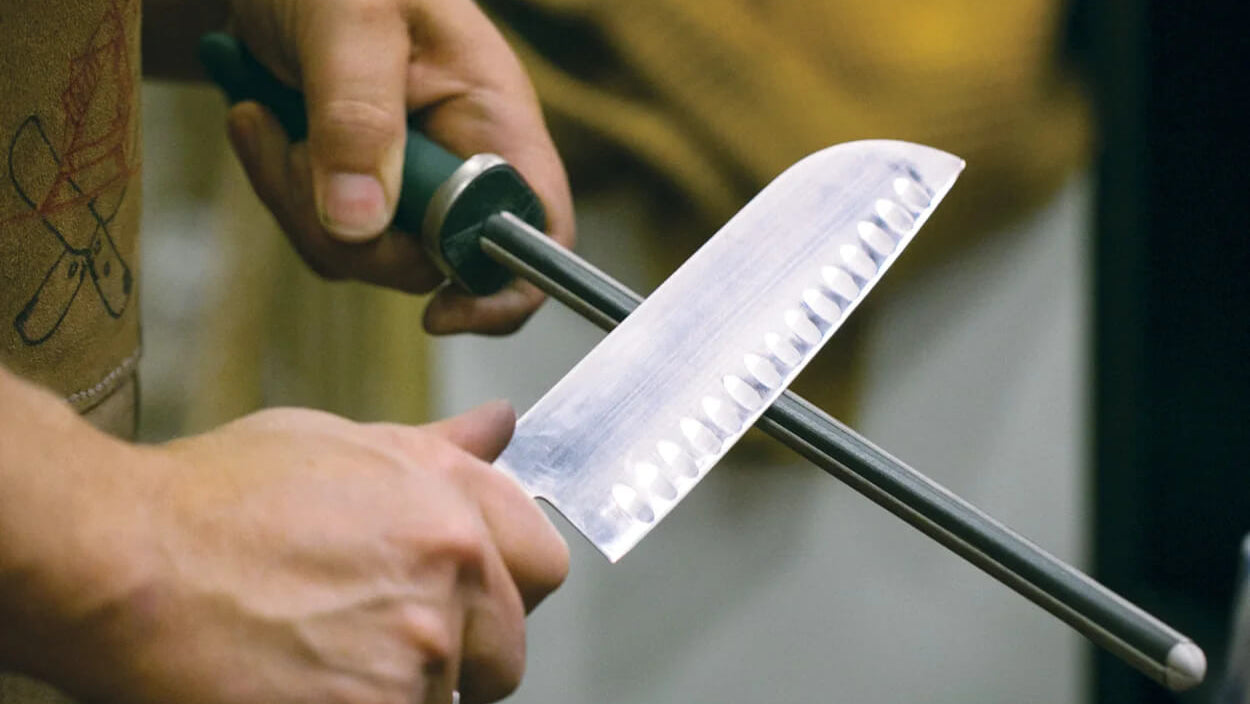
Sharpen stainless steel knives with a sharpening rod
The sharpening rod is to realign the blade that has been rolled or deflected. But how to use it?
Take the sharpening rod and fix it vertically downwards. The knife and the sharpening rod are at an angle of 20 degrees, from the support of the knife to the tip of the knife, rub down. And the other side is the same. Repeat a few times, and then wipe and sharpen the knife. Stick and kitchen knife.
Care for Carbon Steel Knives
Most professional chefs use carbon steel kitchen knives, which are mainstream mid-to-high-end kitchen knives because of their extreme sharpness and good cutting feel.
However, carbon steel knives have no chromium or low chromium. They are very easy to rust and require frequent maintenance. In normal maintenance, you should always observe the condition of the kitchen knife and always keep two things: oil and 2 pieces of a soft cloth.

Misunderstanding #1
The carbon steel knives can be used to cut fruits regularly.
Correction #1
You'd better avoid cutting fruits with carbon steel knives and use special fruit knives. Because many fruit juice juices are acidic, they chemically react with metals and cause rust on the tool's surface. Other salty or acidic residues, such as tomato juice, mustard, etc., are also prone to rust.
Misunderstanding #2
It does not need to clean the carbon steel knives. It just needs to be put aside and cleaned up when you have time.
Correction #2
Wash and dry immediately after using the carbon steel knives.
Carbon steel knives are very easy to rust, so they should be wiped dry quickly if they get wet. Wet the soft cloth or rinse it with warm water, dip a small amount of detergent, carefully scrub the blade, and dry it with a dry cloth. It is best to apply some carbon steel kitchen knife maintenance oil, so that the probability of rust will be reduced a lot.
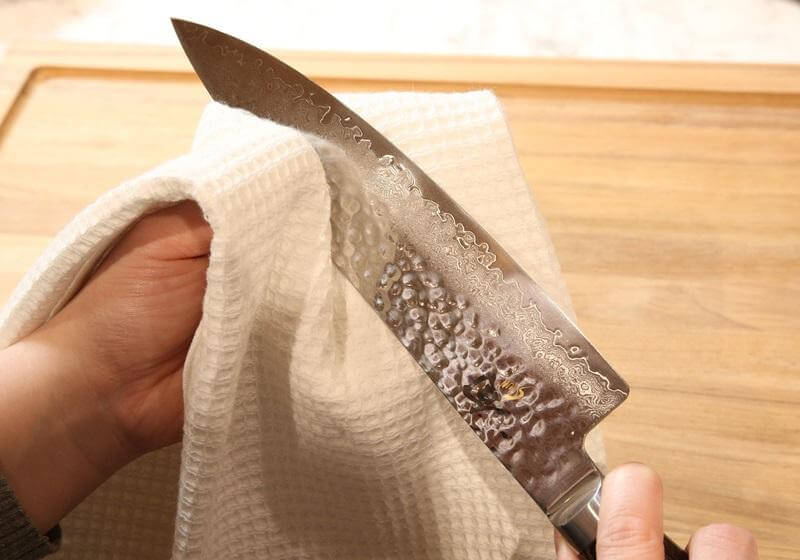
Misunderstanding #3
The carbon steel knives cannot contact with grease.
Correction #3
Just use grease to prevent rust.
After a long time of processing fatty foods, the surface of carbon steel knives will undergo an esterification reaction, which will form a gorgeous color. It means the tool's surface is oxidized, which can effectively isolate the air from contacting the metal surface and do the anti-rust effect.
The disadvantage is that the blade is discolored, but it is harmless to the human body.
Tips to Remove rust
If there is a little rust on the blade, use a stainless steel cleaning cloth or 2000 grit sandpaper to wipe off the rust.
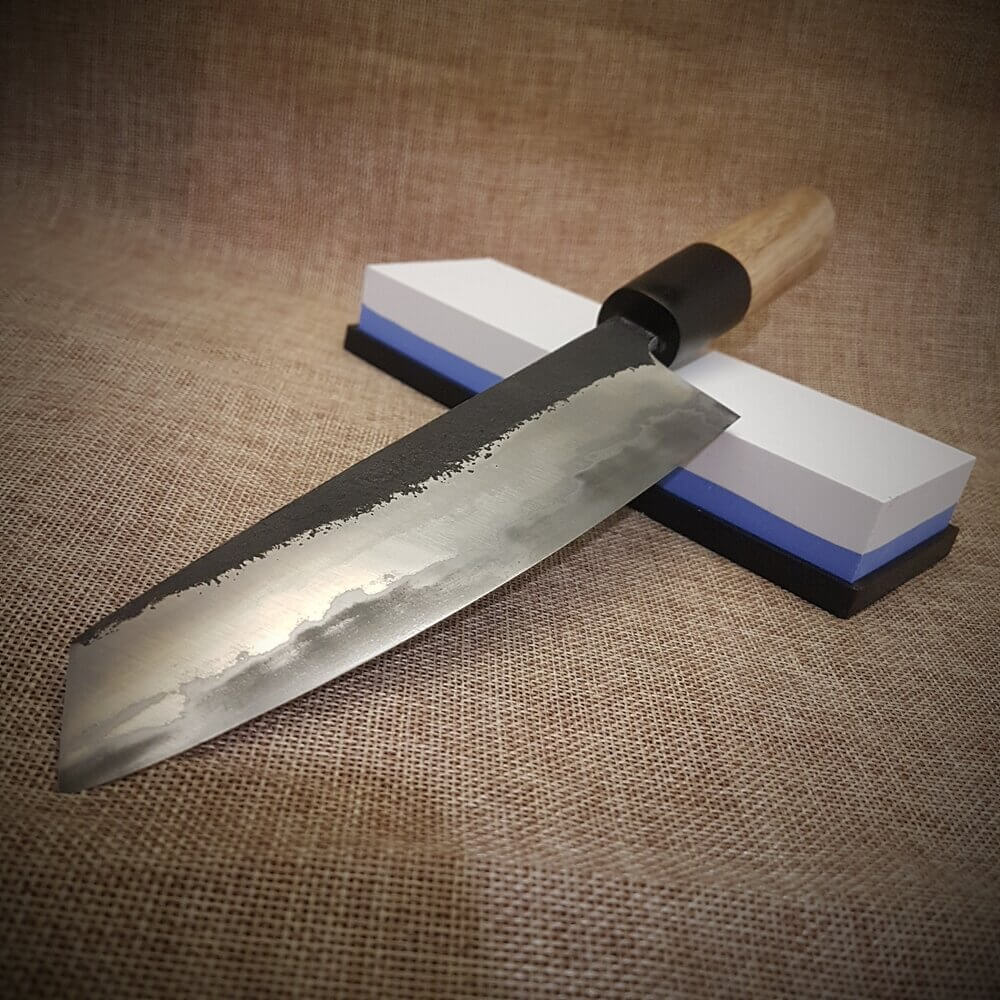
Sharpen carbon steel knives with a whetstone
If the hardness of the kitchen knife is higher than 60, the hardness is higher. If the kitchen knife becomes blunt, the blade is generally worn out. In this case, the sharpener will not function, and the sharpening stone is needed to help.
There are many meshes for the whetstone to choose from: the number of particles per square centimetre. The larger the mesh, the finer the whetstone. Low-mesh grinding gives roughness, but cutting is fast. High meshes have high sharpness but slow cutting. The sharpening requires a combination of high and low, and the best effect is 2 pieces. Generally speaking, 1000+5000 mesh or 1000+3000 mesh is the most suitable.
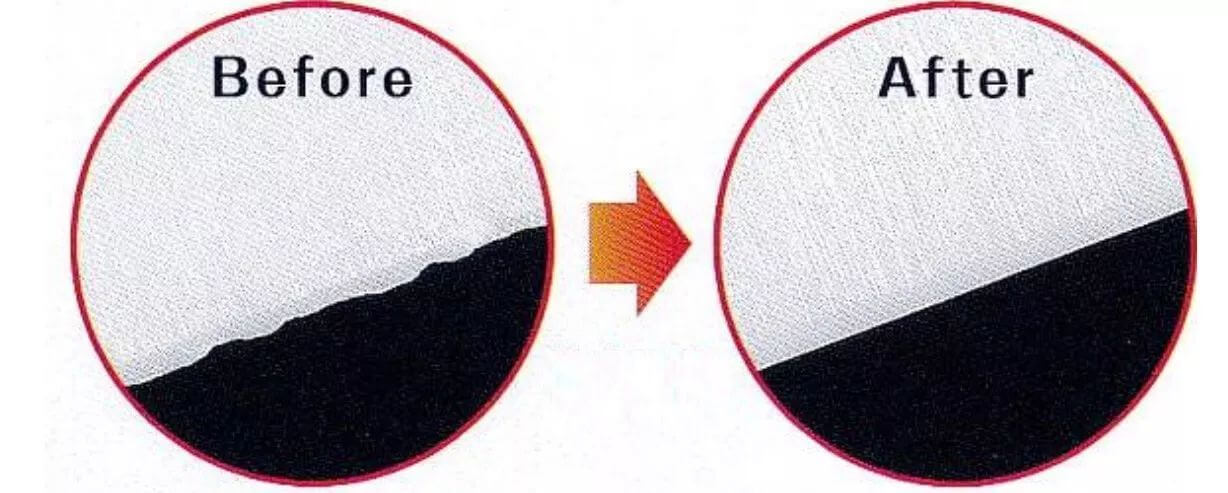
Sharpening is in three stages: blade head, blade body, and blade tail.
- Sharpen the front first. The angle between the knife and the whetstone should not be too large.
- Keep it at about 15 degrees to increase the contact surface between the knife and the whetstone.
- Do not change the angle until the burrs are smoothed and the blade becomes thinner and sharper.
The same process is applied when sharpening the backside.
Finally, gently sharpen in your direction a few times, the burrs will fall off, and the knife will be polished at this time. If the whetstone appears uneven, you need to use an implement to smooth it before using it.
Care for Alloy Steel Kitchen Knives
When alloy steel is smelted, other alloy elements are added to achieve the purpose of wear resistance, high strength, and corrosion resistance.
Although the sharpness is better, the material determines that the knife itself will be a little more squeamish, and you need to use a sharpening stone instead of a sharpening stick.

Before sharpening the knife:
- Prepare a sharpening stone, a towel, and a glass of water.
- Soak the whetstone in water for 10-20 minutes until the whetstone no longer emits small bubbles.
- Put the towel under the whetstone to prevent the whetstone from moving during the sharpening process.
The sharpening force must be lightly pushed, and heavy pulled. When pushing forward, the force should be small, the speed should be slow, and the force should be increased when pulling back. This can sharpen the blade and avoid damage to the blade. The master will gradually lift the blade when it reaches the end of the knife during the pushing process. The closer look will form an arc, but this method requires extremely high stability and patience.
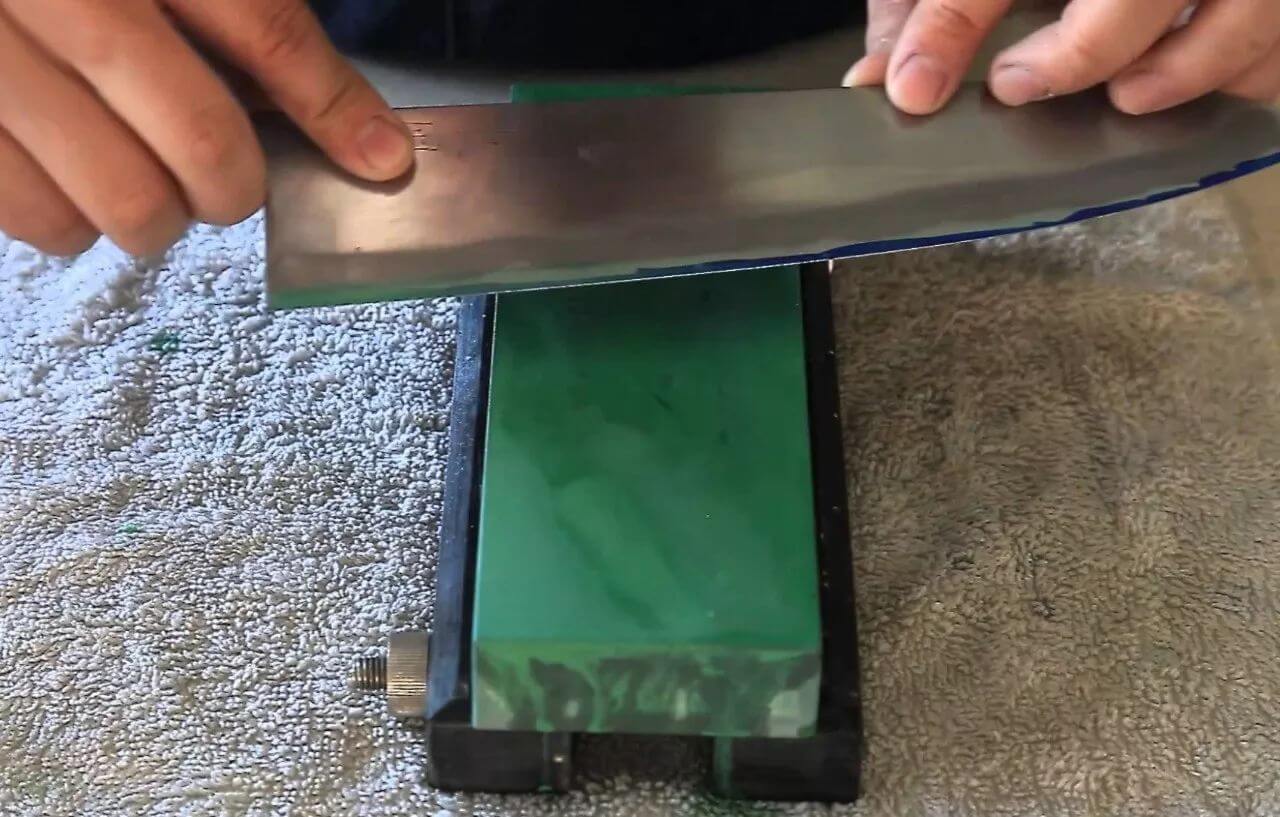
Misunderstanding
The knives can be used with the guillotine cutting technique.
Correction
Please don't do the guillotine technique. The knives should be sharpened once they do it. Otherwise, the blade will be damaged permanently.
Tips: Unused tools need to be oiled for storage
If the kitchen knife is not used for a period of time, the blade can be oiled. The purpose is to isolate the humid air and avoid rust. The choice of oil can be professional knife oil, olive oil or castor oil in the kitchen. Then you can wrap it with anti-rust paper or put it in a moisture-proof box for storage.
Good knives are usually equipped with a wooden scabbard, usually made of cypress, which can absorb water, prevent moisture, and prevent rust.
Care for Ceramic kitchen knife
The hardness of ceramics is very high and can reach 90HRC, just second to diamonds. The extremely high hardness makes the cutting edge angle smaller during manufacturing, and the sharpness increases accordingly. Therefore, ceramic knives are not as round as porcelain and have better cutting sharpness than high-grade steel. Moreover, because of their better wear resistance, the frequency of sharpening the knife will not be as frequent as some steel knives.
The material of the ceramic knife is extremely stable, resistant to acid and alkali, and will never rust. It will not react chemically with food, also can keep the original freshness and deliciousness of the ingredients. It is suitable for cutting and peering. However, it only serves small cutting tasks like cutting fruits but doesn't cut bones and other hard ingredients. Please avoid patting, knocking, and prying as well.

Misunderstanding
The ceramic knife can be sharpened with whetstones and what sticks by yourself.
Correction
The sharpening process and maintenance need to be done by professionals.
It is more troublesome to sharpen ceramic kitchen knives. Sharpening stones and sharpening rods cannot handle high-hardness ceramic knives well, so they need to be handed over to the manufacturer or specialized personnel for processing.
It should be noted that ceramic kitchen knives can't be fallen. Otherwise, the edge of the knife will break easily when it touches the ground.
Conclusion
After checking the post, you will think it is not easy to care for kitchen knives. But if you do it the right way, you can get twice the result with half the effort at work!


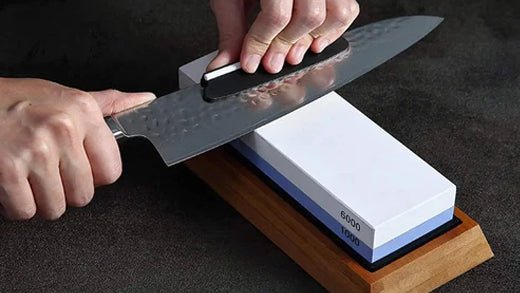
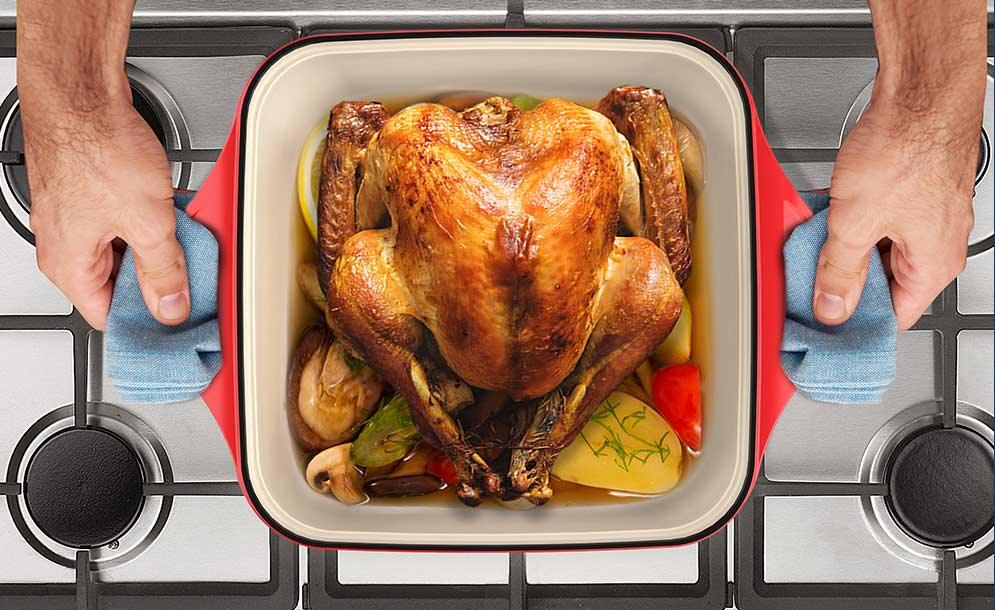
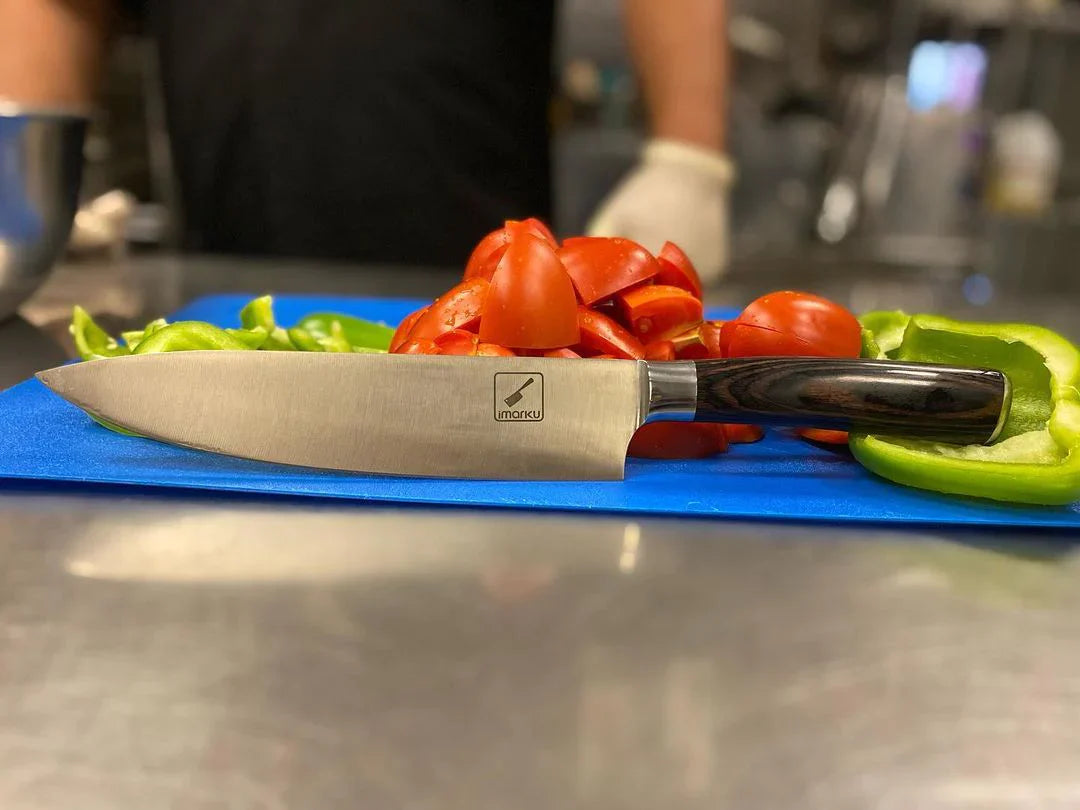

















Leave a comment
All comments are moderated before being published.
This site is protected by hCaptcha and the hCaptcha Privacy Policy and Terms of Service apply.